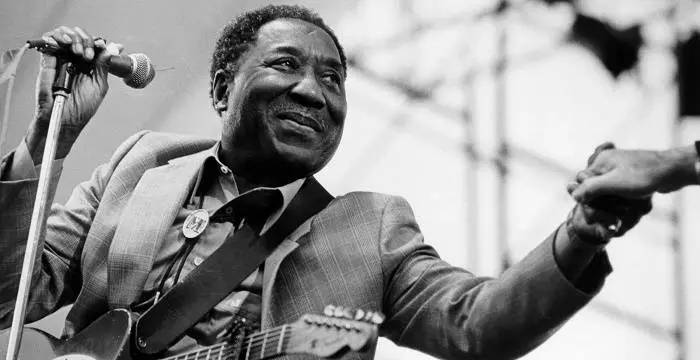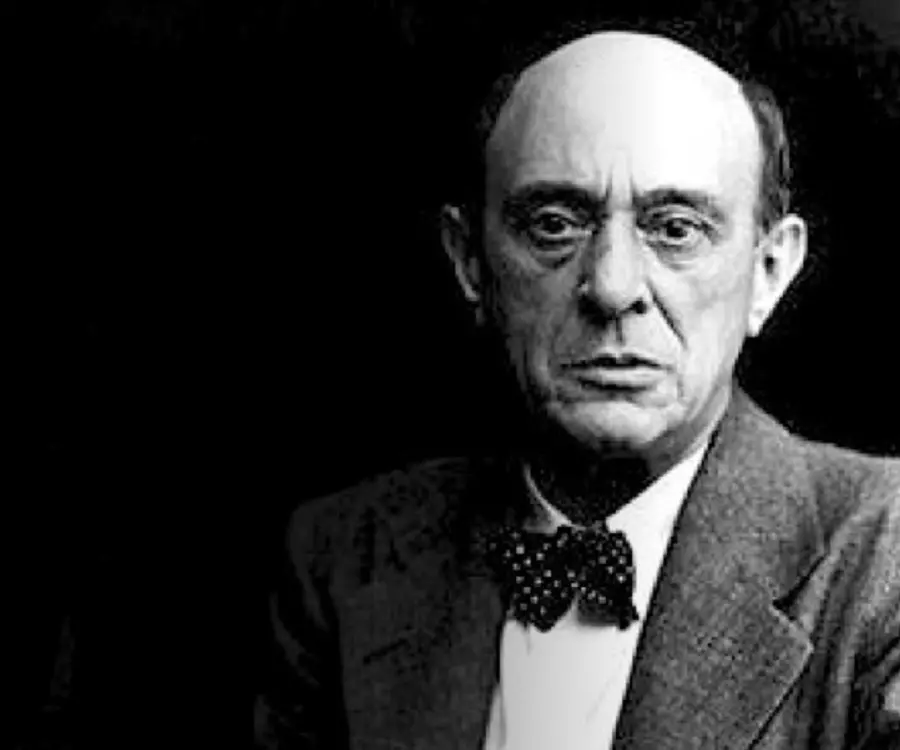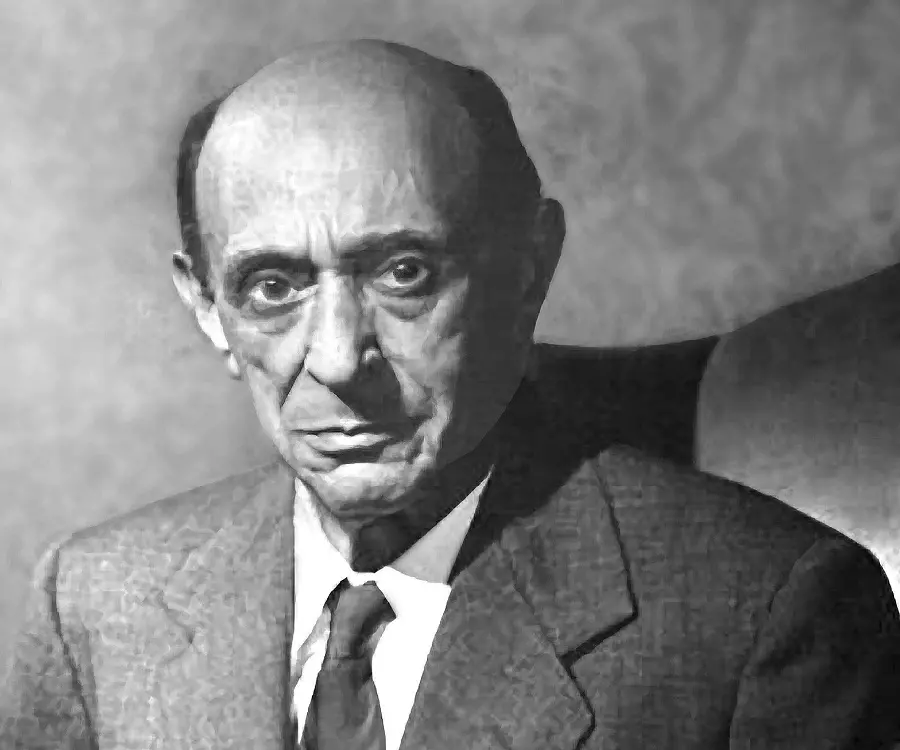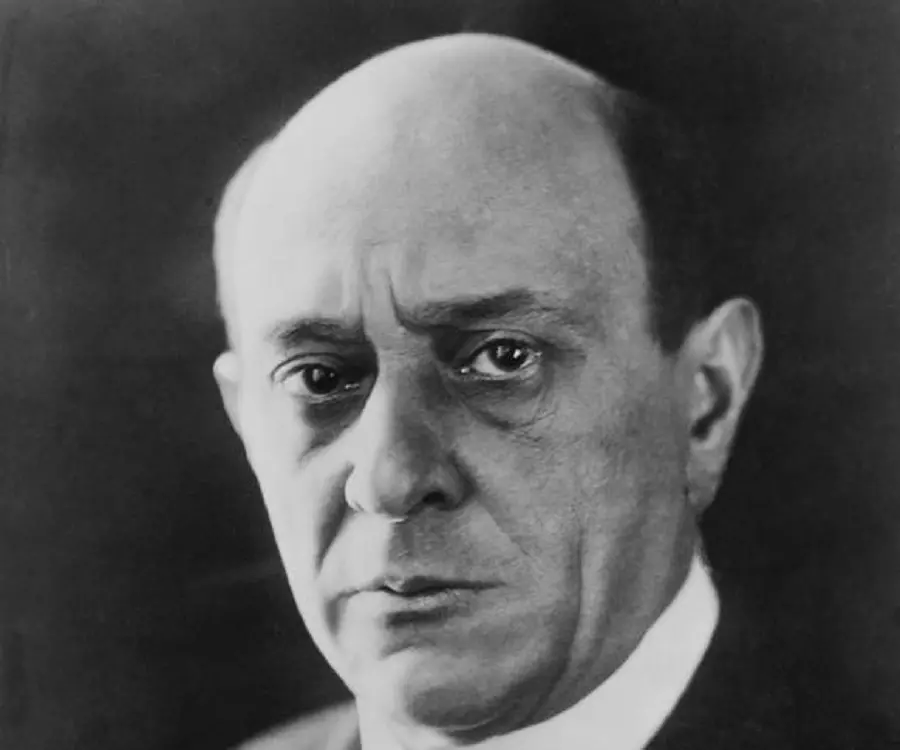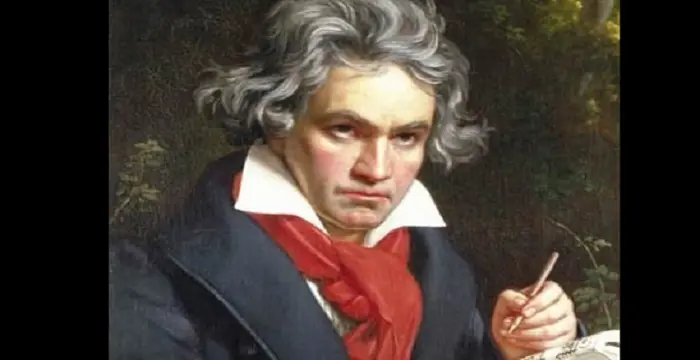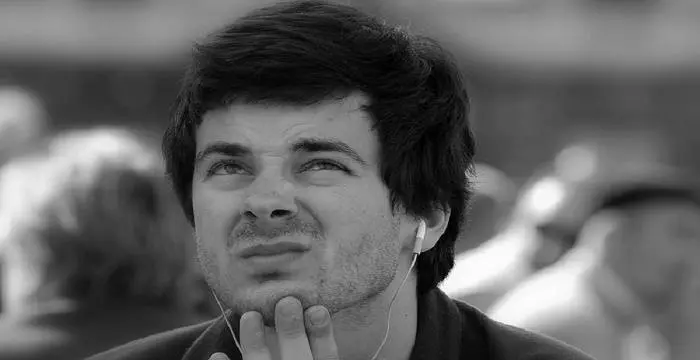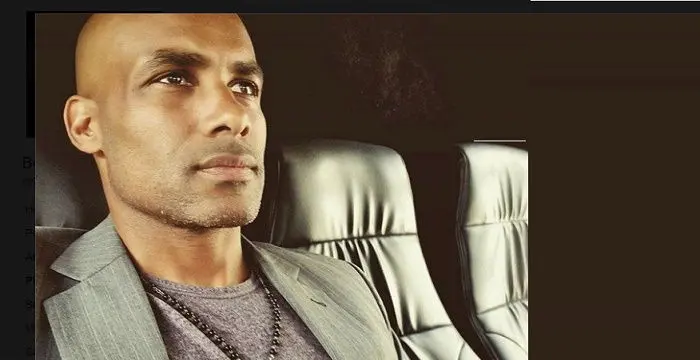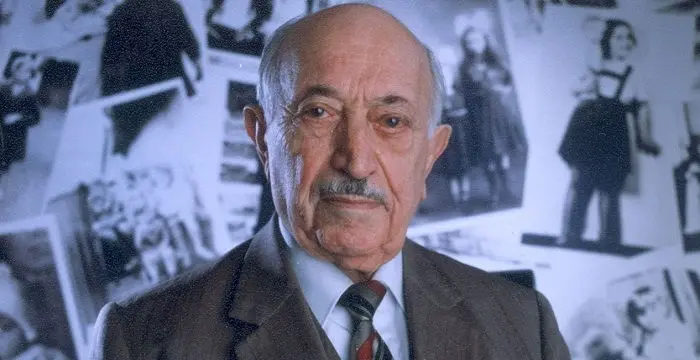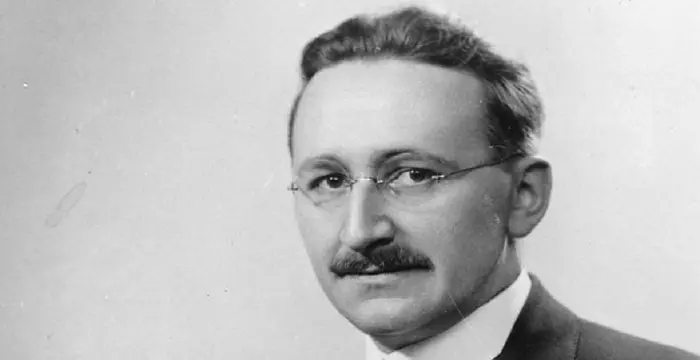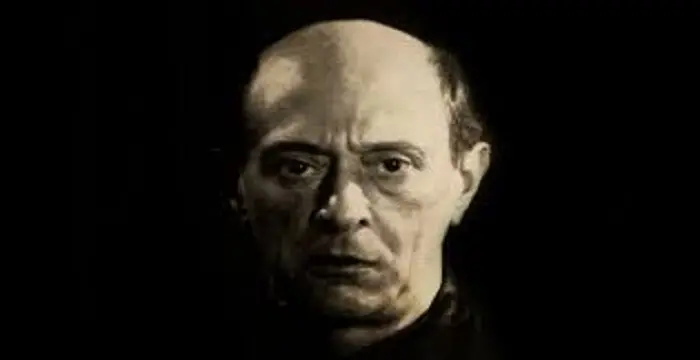
Arnold Schoenberg - Musicians, Birthday and Childhood
Arnold Schoenberg's Personal Details
Arnold Schoenberg was an Austrian-American composer, teacher and music theorist
| Information | Detail |
|---|---|
| Birthday | September 13, 1874 |
| Died on | July 13, 1951 |
| Nationality | Austrian |
| Famous | Musicians, Composers |
| Spouses | Gertrud Kolisch (1898–1967), Mathilde Zemlinsky (1901-1923) |
| Childrens | Georg Schönberg, Gertrud Greissle, Lawrence Schoenberg, Nuria Schoenberg, Ronald Schoenberg |
| Birth Place | Leopoldstadt, Vienna, Austria |
| Religion | Jewish |
| Gender | Male |
| Father | Samuel |
| Mother | Pauline |
| Sun Sign | Virgo |
| Born in | Leopoldstadt, Vienna, Austria |
| Famous as | Composer |
| Died at Age | 76 |
// Famous Musicians
Ted Nugent
Ted Nugent is a hard rock musician known for his hits ‘Stranglehold’ and ‘Cat Scratch Fever’. This biography of Ted Nugent provides detailed information about his childhood, life, achievements, works & timeline.
Muddy Waters
Muddy Waters was a blues musician referred to as the 'father of modern Chicago blues.' Check out this biography to know about his childhood, family life, achievements and fun facts about him.
Travis Bacon
Travis Bacon is an American musician and actor, better known as the son of veteran actors Kevin Bacon and Kyra Sedgwick. Find more about his family, birthday, etc.
Arnold Schoenberg's photo
Who is Arnold Schoenberg?
Arnold Schoenberg, famed for developing the highly celebrated twelve-tone technique, was an Austrian-American composer, teacher and music theorist, who left a lasting influence on the musical scenario of the twentieth century. Born as Arnold Franz Walter Schönberg into a lower middle-class Jewish family in the later part of the nineteenth century in Vienna, he was mostly an autodidact, having rudimentary formal training only in violin. Later on, he received instruction from Alexander Zemlinsky in harmony, counterpoint, and composition. Initially his music was rejected as too radical both by the critics and audiences. Consequently, he began to rely more on teaching as the major source of his income and this resulted in the formation of what later became known as the Second Viennese School. In the early 1930s, with the rise of Nazi power, he was forced to flee to the USA, where he was engaged as a professor at the UCLA. Concurrently, he continued to compose, creating many masterpieces. Today, his legacy remains preserved at Arnold Schönberg Center Privatstiftung in Vienna.
// Famous Composers
Ludwig van Beethoven
Ludwig Van Beethoven was one of the greatest composers the world has ever had. Check out this biography to know about his childhood, family life, and achievements.
Emina Jahović
Emina Jahović Sandal is a Serbian model, actress and singer-songwriter. Know more about her childhood, life, career, achievements and timeline in this biography.
John Denver
John Denver, a famous American singer-songwriter and activist, is remembered for songs like Take Me Home, Country Roads and Annie's Song. To know more about his childhood, career, profile and timeline read on
Childhood & Early Life
Arnold Schoenberg was born on 13 September 1874 in Leopoldstadt, a predominantly Jewish district in Vienna. His father, Samuel Schönberg, who ran a small shoe shop, was originally from Bratislava. His mother, Pauline née Nachod, was a piano teacher from Prague.
Arnold was born second out of his parents’ four children. His eldest sister, Adele (Feigele) Schönberg, died at the age of two. Younger to him was another sister named Ottilie Kramer Blumauer and a brother named Heinrich.
Since the apartment they lived in was too small to house his mother’s piano, it is unlikely that he had piano lessons from her. However, he had violin lessons from a professional teacher from the age of eight. Otherwise, Arnold was mostly autodidact.
That he was a genius was evident from the very start. By the age of nine, he could play violin duets of Viotti and Pleye. This was also the time he started composing little pieces for violin.
Not much is known about his education except that he was an average student in school. More significant is the fact that it was while studying in the secondary school that he became friendly with Oskar Adler. Very soon, the two developed a close bonding, which lasted throughout their lives.
Adler encouraged Schönberg to learn cello so that a group of them could play string quartets. He not only learned the instrument; but also began to compose quartets.
Although Adler himself was self-taught, he was also the one who taught Schönberg the rudiments of music, especially in harmony and counterpoint. He also gave him the basic instruction in philosophy and played chamber music with him.
On New Year’s Eve in 1889, when Arnold Schönberg was just fifteen years old, his father suddenly passed away. Very soon, it became imperative that he start earning.
At his mother’s request, Schönberg left school in January 1891 and became an apprentice with Privatbank Werner & Comp, working there until it became bankrupt in 1895. Thereafter, he mainly earned his living by orchestrating operettas.
Early Career in Music
Around 1894/1895, Arnold met Alexander von Zemlinsky, a rising young composer, who conducted the amateur orchestra, Musikalische Verein Polyhymnia, where Schönberg played the cello. Subsequently, the two became close friends, and from Zemlinsky, Schönberg had further lessons in harmony, counterpoint, and composition.
Zemlinsky also played an important role in grooming Schönberg for his entry into the cultural as well as social life of Vienna. Indeed, all through his life, Schönberg had acknowledged Zemlinsky as his only teacher.
On 2 March 1896, Schönberg had his debut at a Polyhymnia concert, where his work was performed for the first time in any public concert. However, his first important work was ‘String Quartet in D Major’, which he wrote in 1897.
It was first performed during the concert session in Vienna in 1897-98 and then again in 1898-99. In both the occasions, it was well received by the audience. He was by now well-known enough to receive his first student, Vilma von Webenau.
Very soon, he became a part of the vibrant circle of artists that thronged the city’s coffee shops and beer bars. Yet, he must have felt alienated because of his faith and to strengthen his ties with Western European culture, he converted to Christianity in 1898.
In 1899, inspired by Richard Dehmel's poem of the same name, he wrote ‘Verklärte Nacht’ (Transfigured Night). By then, he had met Mathilde von Zemlinsky and his feelings for her also played an important part in its composition. However, it could not premiered before 1903 because of its Wagnerian style.
In Berlin
In 1901, Arnold Schönberg moved to Berlin in search of better financial prospects. By then, he had married Mathilde, which was not approved by many in his old circle and they began to avoid him.
In Berlin, he found employment as the musical director at the Überbrettl, an intimate artistic cabaret. Although he continued writing songs for the group, he was not at all happy as the position was neither artistically nor financially rewarding.
While working under such stressful conditions, Schönberg met the German composer Richard Strauss, who quickly recognized his acumen as a composer. Strauss not only helped him to get a job as a composition teacher at the Stern Conservatory, but also played a significant part in securing the Liszt stipend for him.
Strauss also encouraged him to compose for big orchestra. Inspired by him, Schönberg composed his only symphonic poem in 1902-1903. Titled, ‘Pelleas und Melisande’, it was based on a drama by Maurice Maeterlinck. Shortly after that, he returned to Vienna.
Return to Vienna
On returning to Vienna in the summer of 1903, Arnold Schönberg started living in the upcoming Ninth District. Some time now, he met Gustav Mahler. This was also the year, he had his ‘Verklärte Nacht’ premiered; but the work was too radical for the audience and was rejected.
In spite of such rejections, Schönberg continued to work. ‘String Quartet No. 1 in D Minor, Op. 7’ (1904) and ‘Chamber Symphony in E Major’ (1906) were two of his unusual works of this period, which the audience found hard to appreciate.
From 1904 onwards, to augment his income, he also started taking students. Very soon, he began to make his mark in this field and had Alban Berg, Anton Webern, Heinrich Jalowetz, Karl Horwitz and Erwin Stein among his students. One day, they would form the Second Viennese School.
In 1908, Schönberg came face to face with a personal tragedy when his wife ran away with one of his students. Although she came back to him within a few months, the incident had a great impact on his works.
It was during her absence that he wrote ‘Du lehnest wider eine Silberweide’ (You lean against a silver-willow). So far, his works were strictly tonal; but in this composition, he moved away from this tradition and wrote it without referring to any specific key.
Also in 1908, he completed ‘String Quartet No. 2’. Although he had used traditional key signatures in the first two movements of this composition, in the last two movements he had wakened its links to the traditional tonality. It is also the first string quartet to include a soprano vocal line.
He now continued his work in the new direction, composing a number of atonal pieces among which ‘Five Orchestral Pieces, Op. 16’ (1909) and ‘Pierrot Lunaire, Op. 21’ (1912) are the most significant. Meanwhile in 1910, he wrote ‘Harmonielehre’, one of the most influential music-theory books till date.
By 1911, he had moved once again to Berlin in search of better opportunities. While there, he received a job offer from the Vienna Conservatory; but turned it down to remain in Berlin until 1915, when he had to return to Vienna to report for military service.
After World War I
In 1916-1917, Arnold Schönberg spent a brief period serving in the army. Although he was released in 1917 on medical grounds, he did little composing. Instead, in the autumn of 1918, he founded Verein für musikalische Privataufführungen (Society for Private Musical Performances) in order to provide a platform for developing modern music.
Towards the end of 1921, he discovered a novel method of composition that involved 12 different tones. In the same year, he composed his first 12-tone piece, ‘Piano Suite, Op. 25’.
By now, his music had begun to be appreciated, both by critics and audiences. Concurrently, he also became well-known as a teacher and in 1925, he was appointed Director of a Master Class in Composition at the Prussian Academy of Arts in Berlin, a position he held from 1926 to 1933.
During this period, he produced a number of masterpieces, among which were ‘Third String Quartet, Op. 30’ (1927); ‘Von Heute auf Morgen, Op. 32’ (1928-1929)’; Begleitmusik zu einer Lichtspielszene, Op. 34’ (1929-1930). Also in 1930, he started working on one of his greatest, but incomplete, works, ‘Moses and Aron’.
In USA
In 1933, as the Nazi Party rose to power in Germany, Arnold Schönberg, who was born Jewish, lost his job. He was then vacationing in Paris and decided not to return. He first tried to migrate to Great Britain; but when that failed, he chose the USA.
While living in Paris, he reverted to Judaism in a local synagogue, mainly because he found that his Jewish faith and culture were inescapable. It was also a protest against the rising anti-Semitism.
In the USA, his first job was at Malkin Conservatory, Boston, which he joined in November 1933. Thereafter in October 1934, he moved to California, mainly for health reasons. Also in 1934, he Americanized his name into Schoenberg.
In 1935, he joined the University of Southern California. Concurrently, he also became a visiting professor at the University of California, Los Angeles. Then in 1936, he became a full professor at UCLA, a position he held until 1944. Meanwhile in 1941, he became an American citizen.
This period was also important from an artistic point of view. ‘Violin Concerto, Op. 36’ (1934/36), the ‘Kol Nidre, Op. 39’ (1938), the ‘Ode to Napoleon Buonaparte, Op. 41’ (1942), the ‘Piano Concerto, Op. 42’ (1942), and ‘A Survivor from Warsaw, Op. 46’ (1947) are a few of his notable works of this period.
Major Works
Arnold Schoenberg is best remembered for his invention of the twelve-tone technique, also known as dodecaphony or serialism. It ensures that all the twelve notes of the chromatic scale are given more or less equal importance, thus preventing emphasis on any one note.
He is also known as the proponent of the Second Viennese School, which comprised the composer, his pupils and close associates. Initially characterized by late-Romantic expanded tonality, their music later evolved first into atonality and finality into serial twelve-tone technique.
Personal Life & Legacy
Arnold Schoenberg married Mathilde Zemlinsky, the sister of his teacher Alexander von Zemlinsky, on 7 October 1901. The couple had two children: a daughter named Gertrud, and a son, Georg.
During the summer of 1908, Mathilde, feeling excluded from her husband’s social circle, ran away with the Austrian painter, Richard Gerstl. However, she returned after a few months and the couple lived together until her death in October 1923.
In August 1924, Schoenberg married Gertrud Bertha Kolisch, a sister of his pupil, the violinist Rudolf Kolisch. He had a daughter, Dorothea Nuria and two sons, Ronald and Lawrence, from this marriage.
Schoenberg suffered from triskaidekaphobia or the fear of the number 13. As he turned 76, an astrologer warned him that the year may be dangerous for him as seven and six makes thirteen.
On 12 July, 1951, he felt sick, anxious and depressed, spending the whole day in bed. On the night of 13 July, 1951 he had a heart attack and died from it at 11:45 pm, just 15 minutes before midnight.
Schoenberg's mortal remains were cremated. Later on 6 June 1974, his ashes were interred at the Zentralfriedhof in Vienna. His works, which are archived at the Arnold Schönberg Center Privatstiftung in Vienna since 1998, continue to carry his legacy.
// Famous Virgo Celebrities peoples
Temple Grandin
Temple Grandin is a well-known American writer, autistic activist and animal expert. This biography profiles her childhood, life, achievements, career and timeline
Alex Holtti
Check out all that you wanted to know about Alex Holtti, the famous Danish Viner & YouTuber; his birthday, his family and personal life, his girlfriends, fun trivia facts and more.
Benjamin Atkinson
Benjamin Atkinson is the son of the world-renowned British actor and comedian, Rowan Atkinson. Check out this biography to know about his childhood, family, personal life, including his age, birthday, etc.
Arnold Schoenberg biography timelines
- // 13th Sep 1874Arnold Schoenberg was born on 13 September 1874 in Leopoldstadt, a predominantly Jewish district in Vienna. His father, Samuel Schönberg, who ran a small shoe shop, was originally from Bratislava. His mother, Pauline née Nachod, was a piano teacher from Prague.
- // 1889On New Year’s Eve in 1889, when Arnold Schönberg was just fifteen years old, his father suddenly passed away. Very soon, it became imperative that he start earning.
- // 1891 To 1895At his mother’s request, Schönberg left school in January 1891 and became an apprentice with Privatbank Werner & Comp, working there until it became bankrupt in 1895. Thereafter, he mainly earned his living by orchestrating operettas.
- // 1894 To 1895Around 1894/1895, Arnold met Alexander von Zemlinsky, a rising young composer, who conducted the amateur orchestra, Musikalische Verein Polyhymnia, where Schönberg played the cello. Subsequently, the two became close friends, and from Zemlinsky, Schönberg had further lessons in harmony, counterpoint, and composition.
- // 2nd Mar 1896 To 1897On 2 March 1896, Schönberg had his debut at a Polyhymnia concert, where his work was performed for the first time in any public concert. However, his first important work was ‘String Quartet in D Major’, which he wrote in 1897.
- // 1898 To 1899It was first performed during the concert session in Vienna in 1897-98 and then again in 1898-99. In both the occasions, it was well received by the audience. He was by now well-known enough to receive his first student, Vilma von Webenau.
- // 1898Very soon, he became a part of the vibrant circle of artists that thronged the city’s coffee shops and beer bars. Yet, he must have felt alienated because of his faith and to strengthen his ties with Western European culture, he converted to Christianity in 1898.
- // 1899 To 1903In 1899, inspired by Richard Dehmel's poem of the same name, he wrote ‘Verklärte Nacht’ (Transfigured Night). By then, he had met Mathilde von Zemlinsky and his feelings for her also played an important part in its composition. However, it could not premiered before 1903 because of its Wagnerian style.
- // 1901In 1901, Arnold Schönberg moved to Berlin in search of better financial prospects. By then, he had married Mathilde, which was not approved by many in his old circle and they began to avoid him.
- // 1901Arnold Schoenberg married Mathilde Zemlinsky, the sister of his teacher Alexander von Zemlinsky, on 7 October 1901. The couple had two children: a daughter named Gertrud, and a son, Georg.
- // 1902 To 1903Strauss also encouraged him to compose for big orchestra. Inspired by him, Schönberg composed his only symphonic poem in 1902-1903. Titled, ‘Pelleas und Melisande’, it was based on a drama by Maurice Maeterlinck. Shortly after that, he returned to Vienna.
- // 1903On returning to Vienna in the summer of 1903, Arnold Schönberg started living in the upcoming Ninth District. Some time now, he met Gustav Mahler. This was also the year, he had his ‘Verklärte Nacht’ premiered; but the work was too radical for the audience and was rejected.
- // 1904 To 1906In spite of such rejections, Schönberg continued to work. ‘String Quartet No. 1 in D Minor, Op. 7’ (1904) and ‘Chamber Symphony in E Major’ (1906) were two of his unusual works of this period, which the audience found hard to appreciate.
- // 1904From 1904 onwards, to augment his income, he also started taking students. Very soon, he began to make his mark in this field and had Alban Berg, Anton Webern, Heinrich Jalowetz, Karl Horwitz and Erwin Stein among his students. One day, they would form the Second Viennese School.
- // 1908In 1908, Schönberg came face to face with a personal tragedy when his wife ran away with one of his students. Although she came back to him within a few months, the incident had a great impact on his works.
- // 1908Also in 1908, he completed ‘String Quartet No. 2’. Although he had used traditional key signatures in the first two movements of this composition, in the last two movements he had wakened its links to the traditional tonality. It is also the first string quartet to include a soprano vocal line.
- // 1908 To 1923During the summer of 1908, Mathilde, feeling excluded from her husband’s social circle, ran away with the Austrian painter, Richard Gerstl. However, she returned after a few months and the couple lived together until her death in October 1923.
- // 1909 To 1912He now continued his work in the new direction, composing a number of atonal pieces among which ‘Five Orchestral Pieces, Op. 16’ (1909) and ‘Pierrot Lunaire, Op. 21’ (1912) are the most significant. Meanwhile in 1910, he wrote ‘Harmonielehre’, one of the most influential music-theory books till date.
- // 1911 To 1915By 1911, he had moved once again to Berlin in search of better opportunities. While there, he received a job offer from the Vienna Conservatory; but turned it down to remain in Berlin until 1915, when he had to return to Vienna to report for military service.
- // 1916 To 1918In 1916-1917, Arnold Schönberg spent a brief period serving in the army. Although he was released in 1917 on medical grounds, he did little composing. Instead, in the autumn of 1918, he founded Verein für musikalische Privataufführungen (Society for Private Musical Performances) in order to provide a platform for developing modern music.
- // 1921Towards the end of 1921, he discovered a novel method of composition that involved 12 different tones. In the same year, he composed his first 12-tone piece, ‘Piano Suite, Op. 25’.
- // 1924In August 1924, Schoenberg married Gertrud Bertha Kolisch, a sister of his pupil, the violinist Rudolf Kolisch. He had a daughter, Dorothea Nuria and two sons, Ronald and Lawrence, from this marriage.
- // 1925 To 1933By now, his music had begun to be appreciated, both by critics and audiences. Concurrently, he also became well-known as a teacher and in 1925, he was appointed Director of a Master Class in Composition at the Prussian Academy of Arts in Berlin, a position he held from 1926 to 1933.
- // 1927 To 1930During this period, he produced a number of masterpieces, among which were ‘Third String Quartet, Op. 30’ (1927); ‘Von Heute auf Morgen, Op. 32’ (1928-1929)’; Begleitmusik zu einer Lichtspielszene, Op. 34’ (1929-1930). Also in 1930, he started working on one of his greatest, but incomplete, works, ‘Moses and Aron’.
- // 1933In 1933, as the Nazi Party rose to power in Germany, Arnold Schönberg, who was born Jewish, lost his job. He was then vacationing in Paris and decided not to return. He first tried to migrate to Great Britain; but when that failed, he chose the USA.
- // Nov 1933 To 1934In the USA, his first job was at Malkin Conservatory, Boston, which he joined in November 1933. Thereafter in October 1934, he moved to California, mainly for health reasons. Also in 1934, he Americanized his name into Schoenberg.
- // 1934 To 1947This period was also important from an artistic point of view. ‘Violin Concerto, Op. 36’ (1934/36), the ‘Kol Nidre, Op. 39’ (1938), the ‘Ode to Napoleon Buonaparte, Op. 41’ (1942), the ‘Piano Concerto, Op. 42’ (1942), and ‘A Survivor from Warsaw, Op. 46’ (1947) are a few of his notable works of this period.
- // 1935 To 1944In 1935, he joined the University of Southern California. Concurrently, he also became a visiting professor at the University of California, Los Angeles. Then in 1936, he became a full professor at UCLA, a position he held until 1944. Meanwhile in 1941, he became an American citizen.
- // 12th Jul 1951On 12 July, 1951, he felt sick, anxious and depressed, spending the whole day in bed. On the night of 13 July, 1951 he had a heart attack and died from it at 11:45 pm, just 15 minutes before midnight.
// Famous Austrian peoples
Martin Buber
One of the greatest philosophers to have ever walked on earth, Martin Buber contributions to philosophy is a long-standing one. Explore all about his profile, childhood, life and timeline here.
Boris Kodjoe
Boris Kodjoe is a German-Ghanaian actor from Austria. Check out this biography to know about his childhood, family life, achievements and fun facts about him.
Simon Wiesenthal
Simon Wiesenthal was an Austrian writer and a famous Nazi hunter. This biography gives detailed information about his childhood, life, works, and timeline.
Friedrich von Hayek
Friedrich von Hayek was a Nobel Prize winning Austrian-British economist and philosopher, best known for his defense of classical liberalism. Check out this biography to know about his childhood, family life and achievements.
Walter Kohn
Nobel Laureate Walter Kohn was an Austrian-born American theoretical chemist and physicist. Check out this biography to know about his childhood, life, achievements, works & timeline.
Reina Triendl
Reina Triendl is a Japanese fashion model, actor, and tarento. Explore more about her childhood, family, personal life, career, etc.
Arnold Schoenberg's FAQ
What is Arnold Schoenberg birthday?
Arnold Schoenberg was born at 1874-09-13
When was Arnold Schoenberg died?
Arnold Schoenberg was died at 1951-07-13
Where was Arnold Schoenberg died?
Arnold Schoenberg was died in Los Angeles
Which age was Arnold Schoenberg died?
Arnold Schoenberg was died at age 76
Where is Arnold Schoenberg's birth place?
Arnold Schoenberg was born in Leopoldstadt, Vienna, Austria
What is Arnold Schoenberg nationalities?
Arnold Schoenberg's nationalities is Austrian
Who is Arnold Schoenberg spouses?
Arnold Schoenberg's spouses is Gertrud Kolisch (1898–1967), Mathilde Zemlinsky (1901-1923)
Who is Arnold Schoenberg childrens?
Arnold Schoenberg's childrens is Georg Schönberg, Gertrud Greissle, Lawrence Schoenberg, Nuria Schoenberg, Ronald Schoenberg
What is Arnold Schoenberg's religion?
Arnold Schoenberg's religion is Jewish
Who is Arnold Schoenberg's father?
Arnold Schoenberg's father is Samuel
Who is Arnold Schoenberg's mother?
Arnold Schoenberg's mother is Pauline
What is Arnold Schoenberg's sun sign?
Arnold Schoenberg is Virgo
How famous is Arnold Schoenberg?
Arnold Schoenberg is famouse as Composer

